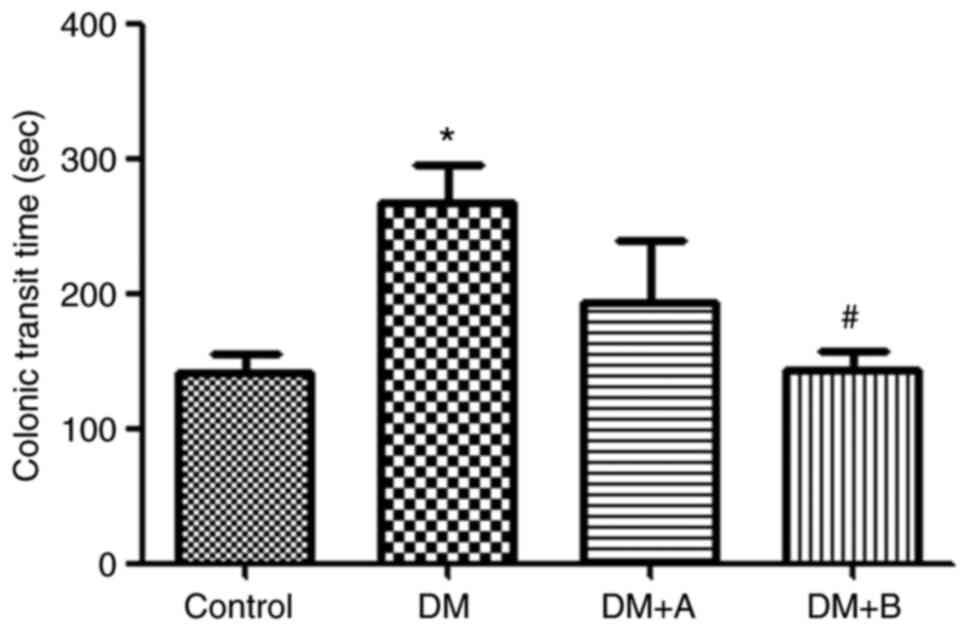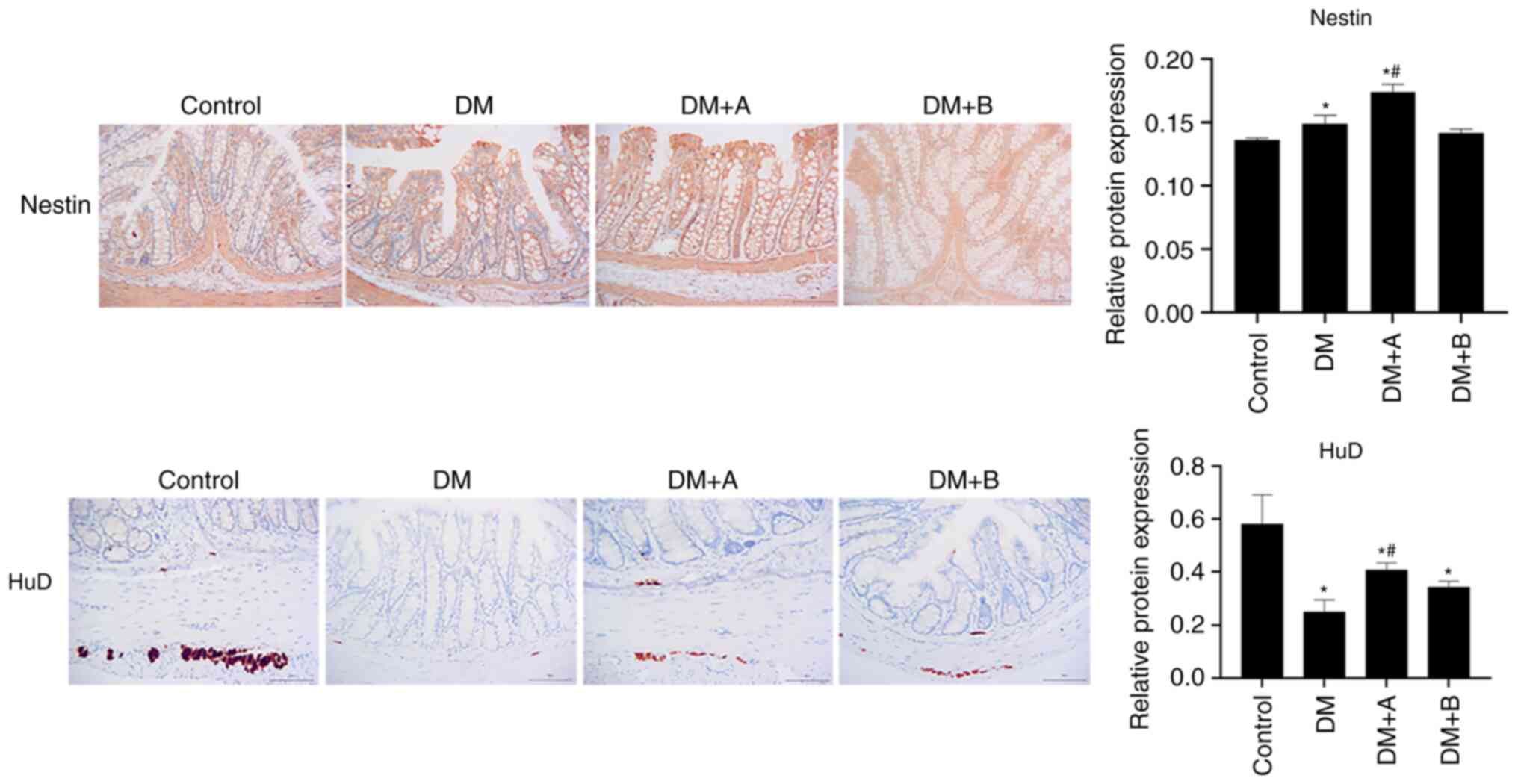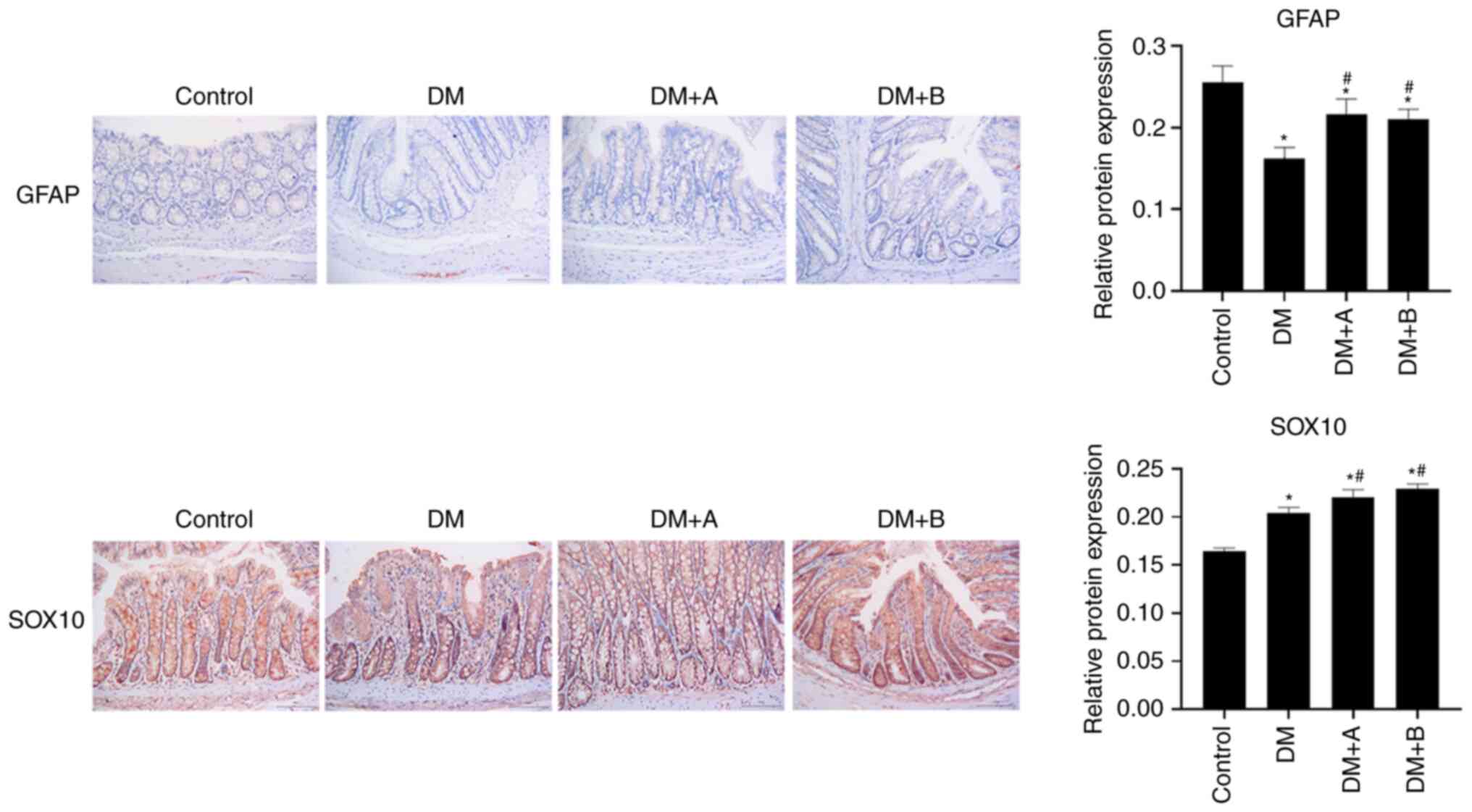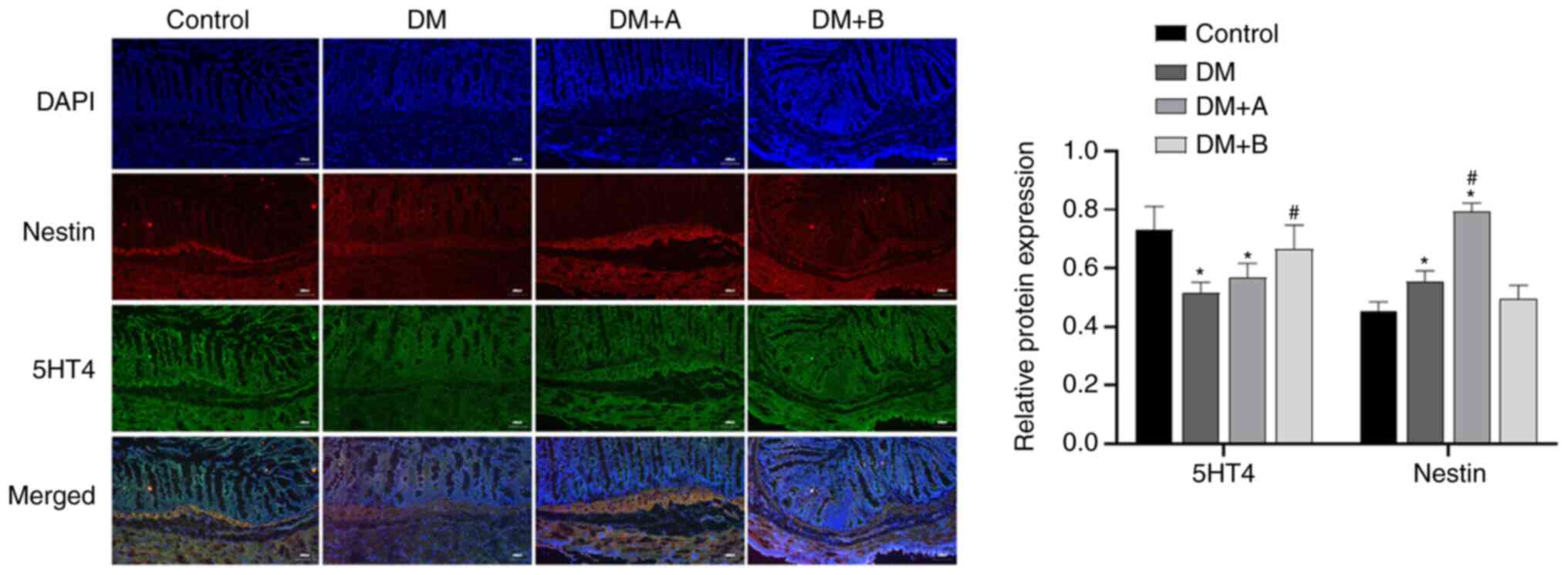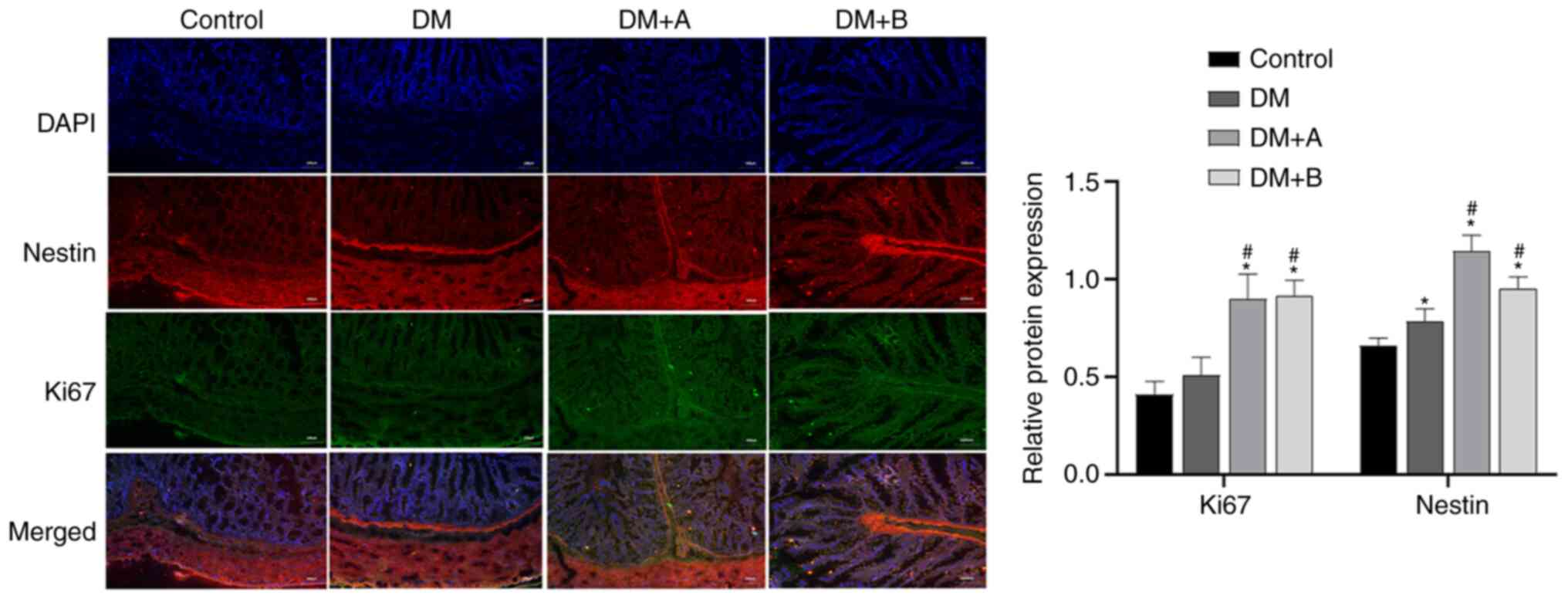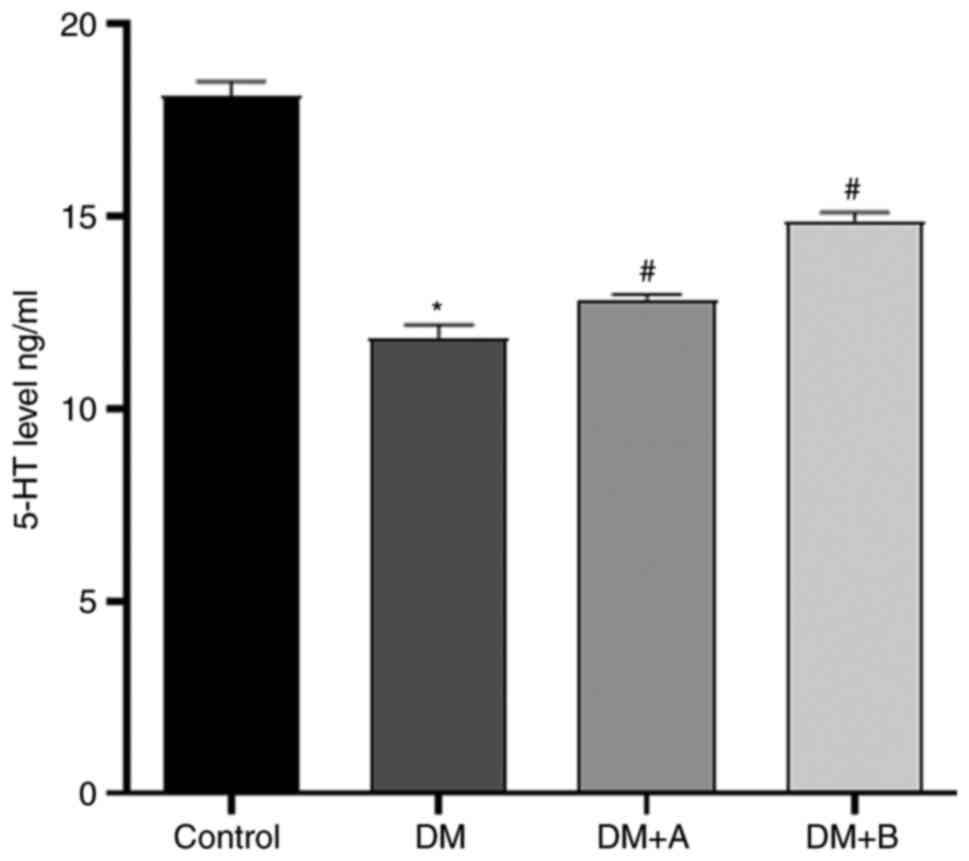|
1
|
NCD Risk Factor Collaboration (NCD -RisC):
Worldwide trends in diabetes since 1980: A pooled analysis of 751
population-based studies with 4.4 million participants. Lancet.
387:1513–1530. 2016. View Article : Google Scholar
|
|
2
|
Yoo H, Choo E and Lee S: Study of
hospitalization and mortality in Korean diabetic patients using the
diabetes complications severity index. BMC Endocr Disord.
20:1222020. View Article : Google Scholar :
|
|
3
|
Horowitz M and Samsom M: Gastrointestinal
function in diabetes mellitus. Chichester: John Wiley & Sons,
Ltd; pp. 1–337. 2004
|
|
4
|
Kalra S, Zargar AH, Jain SM, Sethi B,
Chowdhury S, Singh AK, Thomas N, Unnikrishnan AG, Thakkar PB and
Malve H: Diabetes insipidus: The other diabetes. Indian J
Endocrinol Metab. 20:9–21. 2016. View Article : Google Scholar : PubMed/NCBI
|
|
5
|
Krishnan B, Babu S, Walker J, Walker AB
and Pappachan JM: Gastrointestinal complications of diabetes
mellitus. World J Diabetes. 4:51–63. 2013. View Article : Google Scholar : PubMed/NCBI
|
|
6
|
Azpiroz F and Malagelada C: Diabetic
neuropathy in the gut: Pathogenesis and diagnosis. Diabetologia.
59:404–408. 2016. View Article : Google Scholar
|
|
7
|
Ordög T, Hayashi Y and Gibbons SJ:
Cellular pathogenesis of diabetic gastroenteropathy. Minerva
Gastroenterol Dietol. 55:315–343. 2009.PubMed/NCBI
|
|
8
|
Yarandi SS and Srinivasan S: Diabetic
gastrointestinal motility disorders and the role of enteric nervous
system: Current status and future directions. Neurogastroenterol
Motil. 26:611–624. 2014. View Article : Google Scholar : PubMed/NCBI
|
|
9
|
Domènech A, Pasquinelli G, De Giorgio R,
Gori A, Bosch F, Pumarola M and Jiménez M: Morphofunctional changes
underlying intestinal dysmotility in diabetic RIP-I/hIFNβ
transgenic mice. Int J Exp Pathol. 92:400–412. 2011. View Article : Google Scholar
|
|
10
|
Du F, Wang L, Qian W and Liu S: Loss of
enteric neurons accompanied by decreased expression of GDNF and
PI3K/Akt pathway in diabetic rats. Neurogastroenterol Motil.
21:1229–e114. 2009. View Article : Google Scholar : PubMed/NCBI
|
|
11
|
Furlan MM, Molinari SL and Miranda Neto
MH: Morphoquantitative effects of acute diabetes on the myenteric
neurons of the proximal colon of adult rats. Arq Neuropsiquiatr.
60:576–581. 2002. View Article : Google Scholar : PubMed/NCBI
|
|
12
|
Ordög T: Interstitial cells of Cajal in
diabetic gastroenteropathy. Neurogastroenterol Motil. 20:8–18.
2008. View Article : Google Scholar : PubMed/NCBI
|
|
13
|
Lin HZ, Sarosiek I, Forster J, Damjanov I,
Hou Q and McCallum RW: Association of the status of interstitial
cells of Cajal and electrogastrogram parameters, gastric emptying
and symptoms in patients with gastroparesis. Neurogastroenterol
Motility. 22:56–61. 2010.
|
|
14
|
Rao M and Gershon MD: The bowel and
beyond: The enteric nervous system in neurological disorders. Nat
Rev Gastroenterol Hepatol. 13:517–528. 2016. View Article : Google Scholar : PubMed/NCBI
|
|
15
|
Lake JI and Heuckeroth RO: Enteric nervous
system development: Migration, differentiation, and disease. Am J
Physiol Gastrointest Liver Physiol. 305:G1–G24. 2013. View Article : Google Scholar : PubMed/NCBI
|
|
16
|
Farrugia G: Histologic changes in diabetic
gastroparesis. Gastroenterol Clin North Am. 44:31–38. 2015.
View Article : Google Scholar : PubMed/NCBI
|
|
17
|
Ihana-Sugiyama N, Nagata N, Yamamoto-Honda
R, Izawa E, Kajio H, Shimbo T, Kakei M, Uemura N, Akiyama J and
Noda M: Constipation, hard stools, fecal urgency, and incomplete
evacuation, but not diarrhea is associated with diabetes and its
related factors. World J Gastroenterol. 22:3252–3260. 2016.
View Article : Google Scholar : PubMed/NCBI
|
|
18
|
Becker L, Kulkarni S, Tiwari G, Micci MA
and Pasricha PJ: Divergent fate and origin of neurosphere-like
bodies from different layers of the gut. Am J Physiol Gastrointest
Liver Physiol. 302:G958–G965. 2012. View Article : Google Scholar : PubMed/NCBI
|
|
19
|
Burns AJ and Pachnis V: Development of the
enteric nervous system: Bringing together cells, signals and genes.
Neurogastroenterol Motil. 21:100–102. 2009. View Article : Google Scholar : PubMed/NCBI
|
|
20
|
Laranjeira C, Sandgren K, Kessaris N,
Richardson W, Potocnik A, Vanden Berghe P and Pachnis V: Glial
cells in the mouse enteric nervous system can undergo neurogenesis
in response to injury. J Clin Invest. 121:3412–3424. 2011.
View Article : Google Scholar : PubMed/NCBI
|
|
21
|
Joseph NM, He S, Quintana E, Kim YG, Núñez
G and Morrison SJ: Enteric glia are multipotent in culture but
primarily form glia in the adult rodent gut. J Clin Invest.
121:3398–3411. 2011. View
Article : Google Scholar : PubMed/NCBI
|
|
22
|
Matsuyoshi H, Kuniyasu H, Okumura M,
Misawa H, Katsui R, Zhang GX, Obata K and Takaki M: A
5-HT(4)-receptor activation-induced neural plasticity enhances in
vivo reconstructs of enteric nerve circuit insult.
Neurogastroenterol Motil. 22:806–813.e226. 2010. View Article : Google Scholar : PubMed/NCBI
|
|
23
|
Bixby S, Kruger GM, Mosher JT, Joseph NM
and Morrison SJ: Cell-intrinsic differences between stem cells from
different regions of the peripheral nervous system regulate the
generation of neural diversity. Neuron. 35:643–656. 2002.
View Article : Google Scholar : PubMed/NCBI
|
|
24
|
Kruger GM, Mosher JT, Bixby S, Joseph N,
Iwashita T and Morrison SJ: Neural crest stem cells persist in the
adult gut but undergo changes in self-renewal, neuronal subtype
potential, and factor responsiveness. Neuron. 35:657–669. 2002.
View Article : Google Scholar : PubMed/NCBI
|
|
25
|
Heanue TA and Pachnis V: Enteric nervous
system development and Hirschsprung's disease: Advances in genetic
and stem cell studies. Nat Rev Neurosci. 8:466–479. 2007.
View Article : Google Scholar : PubMed/NCBI
|
|
26
|
Burns AJ, Goldstein AM, Newgreen DF, Stamp
L, Schäfer KH, Metzger M, Hotta R, Young HM, Andrews PW, Thapar N,
et al: White paper on guidelines concerning enteric nervous system
stem cell therapy for enteric neuropathies. Dev Biol. 417:229–251.
2016. View Article : Google Scholar : PubMed/NCBI
|
|
27
|
Ibrahim A, Ali RAR, Manaf MRA, Ahmad N,
Tajurruddin FW, Qin WZ, Desa SHM and Ibrahim NM: Multi-strain
probiotics (Hexbio) containing MCP BCMC strains improved
constipation and gut motility in Parkinson's disease: A randomised
controlled trial. PLoS One. 15:e02446802020. View Article : Google Scholar
|
|
28
|
Shafe AC, Lee S, Dalrymple JS and Whorwell
PJ: The LUCK study: Laxative usage in patients with GP-diagnosed
constipation in the UK, within the general population and in
pregnancy. An epidemiological study using the general practice
research database (GPRD). Therap Adv Gastroenterol. 4:343–363.
2011. View Article : Google Scholar : PubMed/NCBI
|
|
29
|
Menees SB, Guentner A, Chey SW, Saad R and
Chey WD: How Do US gastroenterologists use over-the-counter and
prescription medications in patients with gastroesophageal reflux
and chronic constipation? Am J Gastroenterol. 110:1516–1525. 2015.
View Article : Google Scholar : PubMed/NCBI
|
|
30
|
Gonzalez-Martinez MA, Ortiz-Olvera NX and
Mendez-Navarro J: Novel pharmacological therapies for management of
chronic constipation. J Clin Gastroenterol. 48:21–28. 2014.
View Article : Google Scholar
|
|
31
|
Hennessy S, Leonard CE, Newcomb C, Kimmel
SE and Bilker WB: Cisapride and ventricular arrhythmia. Br J Clin
Pharmacol. 66:375–385. 2008. View Article : Google Scholar : PubMed/NCBI
|
|
32
|
Wysowski DK, Corken A, Gallo-Torres H,
Talarico L and Rodriguez EM: Postmarketing reports of QT
prolongation and ventricular arrhythmia in association with
cisapride and Food and Drug Administration regulatory actions. Am J
Gastroenterol. 96:1698–1703. 2001. View Article : Google Scholar : PubMed/NCBI
|
|
33
|
Thompson CA: Novartis suspends tegaserod
sales at FDA's request. Am J Health Syst Pharm. 64:10202007.
View Article : Google Scholar : PubMed/NCBI
|
|
34
|
Pan H and Gershon MD: Activation of
intrinsic afferent pathways in submucosal ganglia of the guinea pig
small intestine. J Neurosci. 20:3295–3309. 2000. View Article : Google Scholar : PubMed/NCBI
|
|
35
|
Belkind-Gerson J, Carreon-Rodriguez A,
Benedict LA, Steiger C, Pieretti A, Nagy N, Dietrich J and
Goldstein AM: Nestin-expressing cells in the gut give rise to
enteric neurons and glial cells. Neurogastroenterol Motil.
25:61–69.e7. 2013. View Article : Google Scholar
|
|
36
|
Liu MT, Kuan YH, Wang J, Hen R and Gershon
MD: 5-HT4 receptor-mediated neuroprotection and neurogenesis in the
enteric nervous system of adult mice. J Neurosci. 29:9683–9699.
2009. View Article : Google Scholar : PubMed/NCBI
|
|
37
|
Bouras EP, Michael C, Burton DD, Thomforde
G, McKinzie S and Zinsmeister AR: Prucalopride accelerates
gastrointestinal and colonic transit in patients with constipation
without a rectal evacuation disorder. Gastroenterology.
120:354–360. 2001. View Article : Google Scholar : PubMed/NCBI
|
|
38
|
Karin S and Ken W: Chapter
35-gastrointestinal drugs. Side Eff Drugs Annu. 37:433–459. 2015.
View Article : Google Scholar
|
|
39
|
Bharucha AE, Wouters MM and Tack J:
Existing and emerging therapies for managing constipation and
diarrhea. Curr Opin Pharmacol. 37:158–166. 2017. View Article : Google Scholar : PubMed/NCBI
|
|
40
|
Ueno N, Inui A and Satoh Y: The effect of
mosapride citrate on constipation in patients with diabetes.
Diabetes Res Clin Pract. 87:27–32. 2010. View Article : Google Scholar
|
|
41
|
Gershon MD and Liu MT: Serotonin and
neuroprotection in functional bowel disorders. Neurogastroenterol
Motil. 19(Suppl 2): S19–S24. 2007. View Article : Google Scholar
|
|
42
|
Bassotti G, Gambaccini D and Bellini M:
Prucalopride succinate for the treatment of constipation: An
update. Expert Rev Gastroenterol Hepatol. 10:291–300. 2016.
View Article : Google Scholar
|
|
43
|
Omer A and Quigley EMM: An update on
prucalopride in the treatment of chronic constipation. Therap Adv
Gastroenterol. 10:877–887. 2017. View Article : Google Scholar : PubMed/NCBI
|
|
44
|
Bassotti G, Usai Satta P and Bellini M:
Prucalopride for the treatment of constipation: A view from 2015
and beyond. Expert Rev Gastroenterol Hepatol. 13:257–262. 2019.
View Article : Google Scholar : PubMed/NCBI
|
|
45
|
Garnock-Jones KP: Prucalopride: A review
in chronic idiopathic constipation. Drugs. 76:99–110. 2016.
View Article : Google Scholar
|
|
46
|
Daniali M, Nikfar S and Abdollahi M: An
overview of the efficacy and safety of prucalopride for the
treatment of chronic idiopathic constipation. Expert Opin
Pharmacother. 20:2073–2080. 2019. View Article : Google Scholar : PubMed/NCBI
|
|
47
|
Xie F, Lei J, Ran M, Li Y, Deng L, Feng J,
Zhong Y and Li J: Attenuation of diabetic nephropathy in diabetic
mice by fasudil through regulation of macrophage polarization. J
Diabetes Res. 2020:41269132020. View Article : Google Scholar : PubMed/NCBI
|
|
48
|
McClain J, Grubišić V, Fried D,
Gomez-Suarez RA, Leinninger GM, Sévigny J, Parpura V and Gulbransen
BD: Ca2+ responses in enteric glia are mediated by
connexin-43 hemichannels and modulate colonic transit in mice.
Gastroenterology. 146:497–507.e1. 2014. View Article : Google Scholar
|
|
49
|
Butler Tjaden NE and Trainor PA: The
developmental etiology and pathogenesis of Hirschsprung disease.
Transl Res. 162:1–15. 2013. View Article : Google Scholar : PubMed/NCBI
|
|
50
|
Nagy N and Goldstein AM: Enteric nervous
system development: A crest cell's journey from neural tube to
colon. Semin Cell Dev Biol. 66:94–106. 2017. View Article : Google Scholar : PubMed/NCBI
|
|
51
|
Kiefer JC: Back to basics: Sox genes. Dev
Dyn. 236:2356–2366. 2007. View Article : Google Scholar : PubMed/NCBI
|
|
52
|
Sarkar A and Hochedlinger K: The sox
family of transcription factors: Versatile regulators of stem and
progenitor cell fate. Cell Stem Cell. 12:15–30. 2013. View Article : Google Scholar : PubMed/NCBI
|
|
53
|
Hurst-Kennedy J, Chin LS and Li L:
Ubiquitin C-terminal hydrolase l1 in tumorigenesis. Biochem Res
Int. 2012:1237062012. View Article : Google Scholar : PubMed/NCBI
|
|
54
|
Burger AM and Seth AK: The
ubiquitin-mediated protein degradation pathway in cancer:
Therapeutic implications. Eur J Cancer. 40:2217–2229. 2004.
View Article : Google Scholar : PubMed/NCBI
|
|
55
|
Uesaka T, Nagashimada M and Enomoto H:
Neuronal differentiation in schwann cell lineage underlies
postnatal neurogenesis in the enteric nervous system. J Neurosci.
35:9879–9888. 2015. View Article : Google Scholar : PubMed/NCBI
|
|
56
|
Gerdes J: Ki-67 and other proliferation
markers useful for immunohistological diagnostic and prognostic
evaluations in human malignancies. Semin Cancer Biol. 1:199–206.
1990.PubMed/NCBI
|
|
57
|
Lendahl U, Zimmerman LB and Mckay RD: CNS
stem cells express a new class of intermediate filament protein.
Cell. 60:585–595. 1990. View Article : Google Scholar : PubMed/NCBI
|
|
58
|
Dahlstrand J, Lardelli M and Lendahl U:
Nestin mRNA expression correlates with the central nervous system
progenitor cell state in many, but not all, regions of developing
central nervous system. Brain Res Dev Brain Res. 84:109–129. 1995.
View Article : Google Scholar : PubMed/NCBI
|
|
59
|
Zheng Z, Chen B, Jin Z, Gao M, Tang C, Mao
Y, Qu Y and Liu Y: Downregulation of P2Y2 and HuD during the
development of the enteric nervous system in fetal rats with
anorectal malformations. Mol Med Rep. 20:1297–1305. 2019.PubMed/NCBI
|
|
60
|
Giorgio RD, Volta U, Stanghellini V,
Cogliandro RF, Barbara G, Corinaldesi R, Towns R, Guo C, Hong S and
Wiley JW: Neurogenic chronic intestinal pseudo-obstruction:
Antineuronal antibody-mediated activation of autophagy via Fas.
Gastroenterology. 135:601–609. 2008. View Article : Google Scholar : PubMed/NCBI
|
|
61
|
Akishima-Fukasawa Y, Ino Y, Nakanishi Y,
Miura A, Moriya Y, Kondo T, Kanai Y and Hirohashi S: Significance
of PGP9.5 expression in cancer-associated fibroblasts for prognosis
of colorectal carcinoma. Am J Clin Pathol. 134:71–79. 2010.
View Article : Google Scholar : PubMed/NCBI
|
|
62
|
Kostouros A, Koliarakis I, Natsis K,
Spandidos D, Tsatsakis A and Tsiaoussis J: Large intestine
embryogenesis: Molecular pathways and related disorders (Review).
Int J Mol Med. 46:27–57. 2020.PubMed/NCBI
|
|
63
|
Gomes FC, Paulin D and Moura Neto V: Glial
fibrillary acidic protein (GFAP): Modulation by growth factors and
its implication in astrocyte differentiation. Braz J Med Biol Res.
32:619–631. 1999. View Article : Google Scholar : PubMed/NCBI
|
|
64
|
Tong X, Li L, Li X, Heng L, Zhong L, Su X,
Rong R, Hu S, Liu W, Jia B, et al: SOX10, a novel
HMG-box-containing tumor suppressor, inhibits growth and metastasis
of digestive cancers by suppressing the Wnt/β-catenin pathway.
Oncotarget. 5:10571–10583. 2014. View Article : Google Scholar : PubMed/NCBI
|
|
65
|
Miller I, Min M, Yang C, Tian C, Gookin S,
Carter D and Spencer SL: Ki67 is a graded rather than a binary
marker of proliferation versus quiescence. Cell Rep.
24:1105–1112.e5. 2018. View Article : Google Scholar : PubMed/NCBI
|















